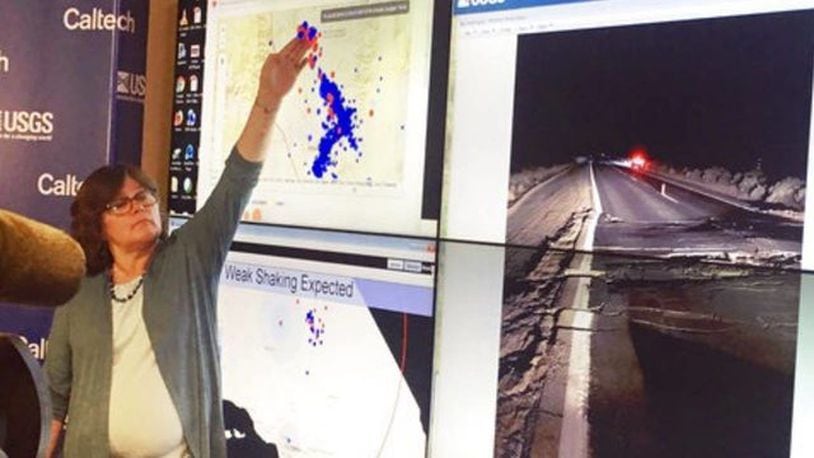As noted seismologist Dr. Lucy Jones held news conferences Friday night, she mentioned terms like foreshock, mainshock and aftershock.
So, what do these scientific terms mean?
"As far as we can tell, those names — mainshock, foreshock, aftershock — are semantic," Jones told KTLA. "They're our tools for trying to describe what's going on. But when you have a sequence going on, every earthquake makes another earthquake more likely. That's what we're seeing right here."
Here is a quick glossary of terms:
Foreshock: A smaller temblor that strike in the days and hours before a larger earthquake hits, according to Live Science. Not all earthquakes have foreshocks, the website reported. Foreshocks are the culmination of slow, creeping movement between two tectonic plates. The 6.4 magnitude earthquake that hit Thursday is now considered a foreshock.
Mainshock: The mainshock is the largest earthquake in a sequence, according to the USGS. Friday night's 7.1. earthquake is now considered the mainshock.
Aftershock: These follow the largest shock of an earthquake sequence, according to the USGS. They are smaller than the mainshock and are within one to two fault lengths distance from the mainshock fault.
According to the USGS, atershocks can continue over a period of weeks, months, or years.
At a news conference Friday night, seismologist Dr. Lucy Jones said that since the main earthquake Friday night, there have been 70 aftershocks of 3.0 or more, 17 aftershocks of 4.0 or higher, and three that topped 5.0.
About the Author
